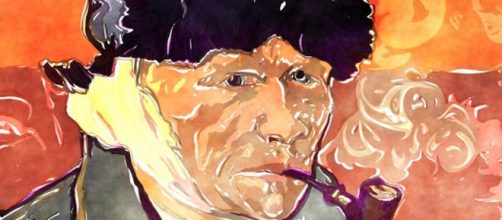Impressionism and Post-Impressionism painting collected by textile magnate Samuel Courtauld will brighten the National Gallery in London through Jan 20, 2019, with an exhibit entitled “Courtauld Impressionism: From Manet to Cezanne.” Commending the collector for bringing these works together, the Observer art critic Laura Cumming said, “It is no understatement to say that our experience of art would not be so rich without him.”
What's in a name?
When it comes to the collection itself, such praise is debatable. Surely art appreciation is possible without seeing this show.
The premise for it, referring to Manet and Cezanne as Impressionists, also raises questions. The National Gallery exhibit material cites an unnamed commentator from 1874 who said that what this artists' group painted was “not the landscape, but the sensation produced by the landscape.” Does that describe the work of either Manet or Cezanne? What has the opaque flatness of Manet's realism or Cezanne's pre-Cubism got to do with Impressionism's un-flat and wholly structure-less focus on light? Art historian Phoebe Pool's 1985 tome on Impressionism makes it clear that “Manet was separated from the Impressionists by artistic aims,” and that Cezanne's interest was in “form, construction, and line.”
Mixing and matching
The Observer review also mixes Impressionists in with Post-Impressionists as if there was no difference between them, like this: “Courtauld began buying impressionist paintings in the early 1920s – Cezanne's apples, Monet's waterlilies, a late self-portrait by Van Gogh, along with his poor bandaged ear.” But as Pool pointed out, “Monet had no great feel for the sanctity of objects such as can be sensed in images by Van Gogh.
Instead, he enjoyed all that was “indeterminate and amorphous in nature.” Does amorphous describe Cezanne's apples or Van Gogh's rendition of his bandaged ear? Probably the more accurate way to describe this very loosely-linked group known as the Impressions is to note the one thing they all had in common – a zeal to get away from academic painting.
Glittering generality
When the group first showed together in 1874 and art critic Lewis Leroy saw Monet's sketchy “Impression, Sunrise,” he unfairly mocked the whole collection “Impressionism.” When you think of the style, you think of paintings that look more like preliminary sketches than finished paintings. Even a casual glance at works by Van Gogh, Manet or by Cezanne tells you that unlike Monet, they were not out to capture the effects of light on various surfaces.
What the eye sees
Leroy wasn't the only one who has questioned Impressionism as an art form. In 1990, ophthalmologist James Ravin, who analyzes vision problems of well-known painters, told the New York Times that Monet's paintings of waterlilies swallowed by puddles of color were not pictured by choice, but because of cataracts. Monet got the diagnosis in 1912. At that point, he was half-way finished with the series. “You can see the gradual change in his work, Ravin said. “The colors became increasingly yellow-brown, which is the color range that people with cataracts see. They lose their ability to see violet and blue.” Monet acknowledged this problem in 1918. You can enjoy this collection anyway, folks. Just overlook the premise for it.


